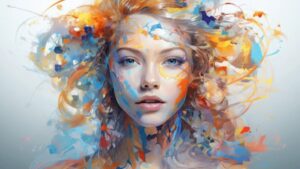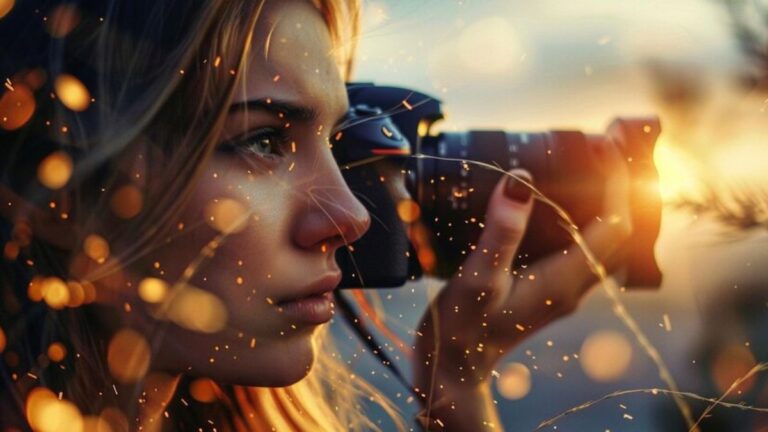Long a pillar of art and communication, photography captures events via the lens of a camera and tells tales. With photographers painstakingly tweaking settings and spending hours in darkrooms or with editing tools to get the desired results, photography historically needed great ability in both shooting and processing images. But with artificial intelligence (AI), the field of photography is starting to change profoundly.

AI is transforming our photo capturing, editing, and generating process. AI is making photography more accessible and efficient from smart camera technologies that automatically alter settings for best photographs to sophisticated software that improves images with one click. Furthermore pushing the envelope of creativity and redefining what is feasible in the field of visual art are AI-generated images produced totally using machine learning algorithms.
AI-Generated Photos
What Are AI-Generated Photos?
Images produced using artificial intelligence algorithms instead of conventional photography techniques are known as AI-generated ones. These graphics are created with cutting-edge machine learning methods that let artificial intelligence create innovative and realistic images from textual descriptions, first photographs, or other inputs. Unlike conventional photography, which catches real-world events, AI-generated photographs are created from data and algorithms, therefore enabling the production of completely new and often strange images that might not exist in reality.

Techniques Used in AI Photo Generation
Artificial intelligence photo creation generates creative and realistic photographs using numerous advanced methods:
- Deep learning and neural networks both simulate intricate patterns and characteristics in photos. Learning from large collections of pictures, neural networks—especially convolutional neural networks (CNNs)—analyze and produce visual data.
- Generative adversarial networks (GANs) are: Two neural networks—the generator and the discriminator—that function in opposition to produce high-quality pictures make up GANs. While the discriminator examines pictures created by the generator, an iterative procedure helps to refine the outcomes so enhancing realism and accuracy.
- Style transfer is the method of imparting one image’s style to another’s content. Style transfer using neural networks generates visuals combining the visual components of several sources, therefore producing creative and unique outcomes.
The Future Landscape of Photography
New Emerging and Technologies
Driven by new trends and technical developments, the terrain of photography is changing significantly. Using artificial intelligence-assisted photo selection and organizing is among the most significant changes. These days, artificial intelligence systems can very effectively manage enormous numbers of images. These systems tag photographs depending on content, context, and user-defined criteria after automatically analyzing and grouping pictures. This feature not only saves time but also improves picture library management, therefore facilitating user access to and retrieval of photographs depending on sophisticated search criteria. Further simplifying the administration process, AI systems may also provide recommendations for photo arrangement including theme albums or image identification of duplicates.
Another interesting development is the incorporation of real-time artificial intelligence improvements in cellphones cameras. AI-driven algorithms designed to maximize photo capturing in real-time abound in contemporary smartphones. These improvements—automatic changes to color balance, focus, and exposure—help to generate high-quality photographs free from human involvement. AI systems also examine situations to propose compositional changes or enhancements, therefore enabling people to easily get professional-level images. This real-time processing capacity raises the quality of smartphone photography by giving consumers options to get aesthetically pleasing outcomes with less effort.
Integration between AR and VR
In the realm of photography, the combination of artificial intelligence (AI) with augmented reality (AR) and virtual reality (VR) marks a significant advance. Applications of augmented reality use artificial intelligence to overlay digital components on actual environments, therefore improving the photography experience. AR may, for example, overlay virtual objects or information over live video feeds so that users may interact with their surroundings in fresh ways. This integration offers fresh chances for artistic expression and narrative as well as improves the visual material.
Within virtual reality, artificial intelligence is crucial for creating immersive digital worlds. Complex virtual environments and items created by AI-powered VR systems may be investigated and shot. For photographers, this presents fresh opportunities to create and engage with totally digital environments. Virtual tours, artistic productions, or interactive encounters may all be done in VR settings, therefore stretching the bounds of conventional photography and providing new creative directions for investigation.
Future Prognostications for Artificial Intelligence in Photography
Looking ahead, customized and adaptive photographic experiences are probably going to define the future terrain. AI will let systems examine personal user preferences and habits, therefore producing very customized visual experiences. AI may, for instance, automatically change settings to match a user’s aesthetic tastes or recommend certain filters or editing techniques depending on past decisions. This degree of customizing guarantees that the photographic output of any user closely conforms to their own preferences and requirements.
Moreover, adaptive artificial intelligence systems will keep developing from user interactions to provide ever more accurate and pertinent recommendations. This might include dynamic changes in image quality depending on real-time conditions or customized comments during photo sessions. More intuitive and interesting photography will result from advancing artificial intelligence technologies, which will help people to take and edit photographs that really express their vision and creativity.
Conclusion:
Driven by the fast developments in artificial intelligence and allied technologies, photography is about to enter a transforming age. The more artificial intelligence develops, its impact on photography grows more significant, changing our methods of capturing, editing, and viewing photos. While real-time improvements in smartphone cameras improve the quality of daily shooting, AI-assisted picture curation and categorization help to simplify the maintenance of big photo collections.
By combining artificial intelligence (AI) with augmented reality (AR) and virtual reality (VR), photographers may interact with and see their work in novel ways, therefore providing fresh angles for creative expression. Looking ahead, customized and adaptable photographic experiences promise to satisfy individual interests and preferences, therefore improving the process of acquiring and editing photos by means of their responsiveness.
These developments will not only improve the technical quality of photography but also expand the creative options open to photographers of all degrees. AI combined with developing technology will keep stretching the envelope of what is possible and present fascinating chances for creative inquiry and invention.
